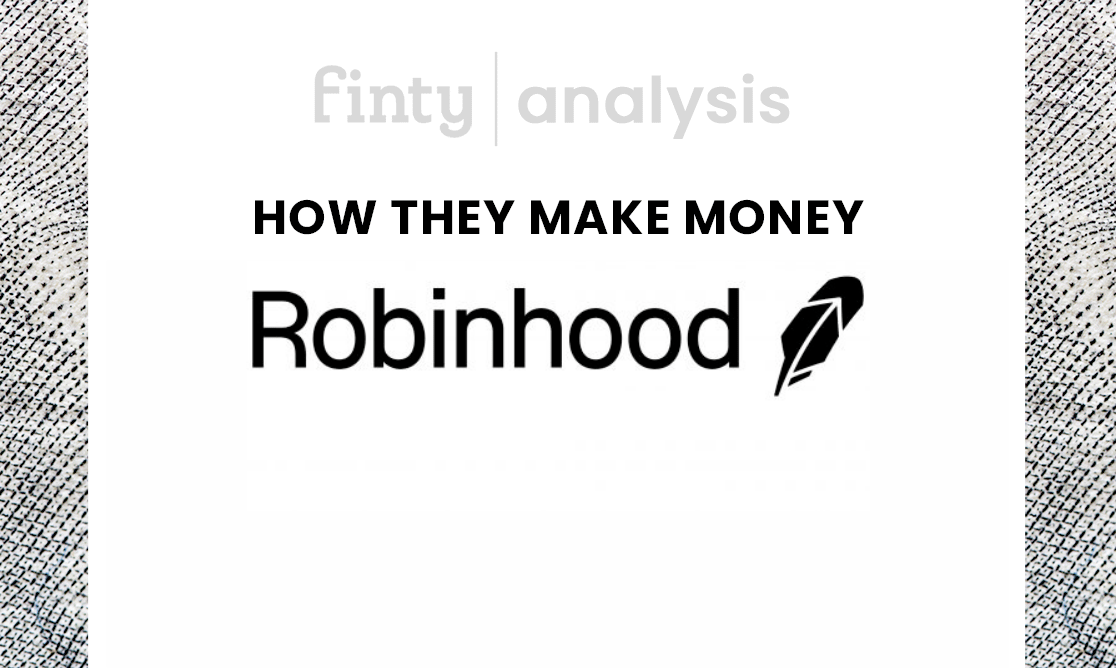- Robinhood is a consumer-facing trading app available for iOS and Android devices.
- The company has a mission of disrupting the financial sector, making trading available to everyone.
- Robinhood earns money by charging its institutional partner for "payment for order flow" and other income streams.
Long before people were accustomed to trading stocks on an app two entrepreneurs, Vladimir Tenev and Baiju Bhatt, were starting Robinhood. Founded in 2013 and headquartered in Menlo Park, California, Robinhood is a trading app for newcomers to the stock market. The company offers a user-friendly mobile trading experience, with no commissions charged on trades.
Robinhood was listed on the Nasdaq stock exchange in July 2021, under the ticker $HOOD, at a share price of $38. The company raised nearly $2 billion on its IPO, earning a valuation of $32 billion, making it one of the year's biggest IPOs, behind Coinbase. Shortly after its IPO, Robinhood went through a controversy due to its interference in the "GameStop" saga.

Coming up next
Key takeaways
- Robinhood's primary revenue comes from the "payment for order flow" model, where it sells user order data to high-frequency trading firms (HFTs).
- Other revenue streams include margin loans, interest on cash, interchange fees from its debit card, transfer fees, and subscriptions to its Robinhood Gold service.
- Concerns have been raised in the past that business models based on payment for order flow are unethical.
What does Robinhood do?
Robinhood is a trading app available for iOS and Android devices. The company offers new investors the chance to purchase stock, cryptocurrency, and ETFs through its platform with no commissions. At the time of its launch, Robinhood was the first company to offer commission-free trading.
As a result of its unique model, many larger trading firms, like Charles Schwab and TD Ameritrade, started offering a zero-commission model to their customers. However, this zero-commission model has a darker side to it.
How does Robinhood work?
Robinhood operates through a "Payment for Order Flow" (PFOF) model. It partners with leading High-frequency trading firms (HFTs) that arbitrage the spread in the trade, making money off the back of the trader without them realizing it or bearing any upfront costs to their trades.
However, many financial experts argue this approach to facilitating trading's unethical.
Robinhood experienced an upset to its reputation in the 2021 "GameStop" debacle, where it halted trading on GameStop shares. Shortly after that, users caught onto Robinhood's Payment for order flow model, and the discovery damaged the company's reputation.
How Robinhood makes money
Robinhood makes money from Payment for Order Flow (PFOF), margin loans, interest on cash, interchange fees on debit card transactions, transfer fees, cash management fees, and subscriptions to its Robinhood Gold service.
Payment for Order Flow (PFOF)
Robinhood makes the bulk of its revenues by providing its institutional HFT partners with order flow from its users. Robinhood receives a cut of the profit the HFT earns on arbitraging the client's trades.
Margin loans
Robinhood Gold clients can open a margin trading account with the platform. Essentially, Robinhood will loan the user the money they need to trade while waiting for their previous trades to clear with the clearinghouse, which can take up to 3-days. Users pay 7.75% p.a. interest when borrowing (11.75% without Gold).
Interest on Cash
Robinhood loans out its cash balances to institutional partners in exchange for interest on these loans.
Interchange fees
Robinhood has a dedicated debit card with Sutton Bank and receives a cut of the interchange fees charged by Sutton to their clients for transacting with their cards.
Transfer fees
Robinhood charges a $75 transfer fee to move money off the platform. It also charges a $20 fee for overnight check delivery and $5 for printed statements.
Subscriber fees
Robinhood launched its "Robinhood Gold" subscription service, where it charges users a $5 monthly subscription fee for accessing a suite of trading tools and research reports. It also offers market data, instant deposits, and margin trading.
Future growth engine
Robinhood spent much of 2021 and 2022 doing damage control to its reputation after the GameStop debacle. During the infamous "short squeeze" of 2021, Robinhood halted trading of GameStop shares on its platform. At the time, investors thought the site was manipulating the market to help hedge funds recover losses.
Robinhood saw an exodus of users from its app and thousands of negative reviews in app stores. Google ended up removing most of these reviews at the request of Robinhood. However, investors caught on, leading to further damage to its brand. The company saw a massive fall in its share price, and it continues to trade well under its IPO price.
Competitors
Robinhood competes with other payment-for-order-flow trading apps. The following companies are some of its top competitors in the space.
- WeBull
- eToro
- TD Ameritrade
- Coinbase
- E*Trade
- Charles Schwab

